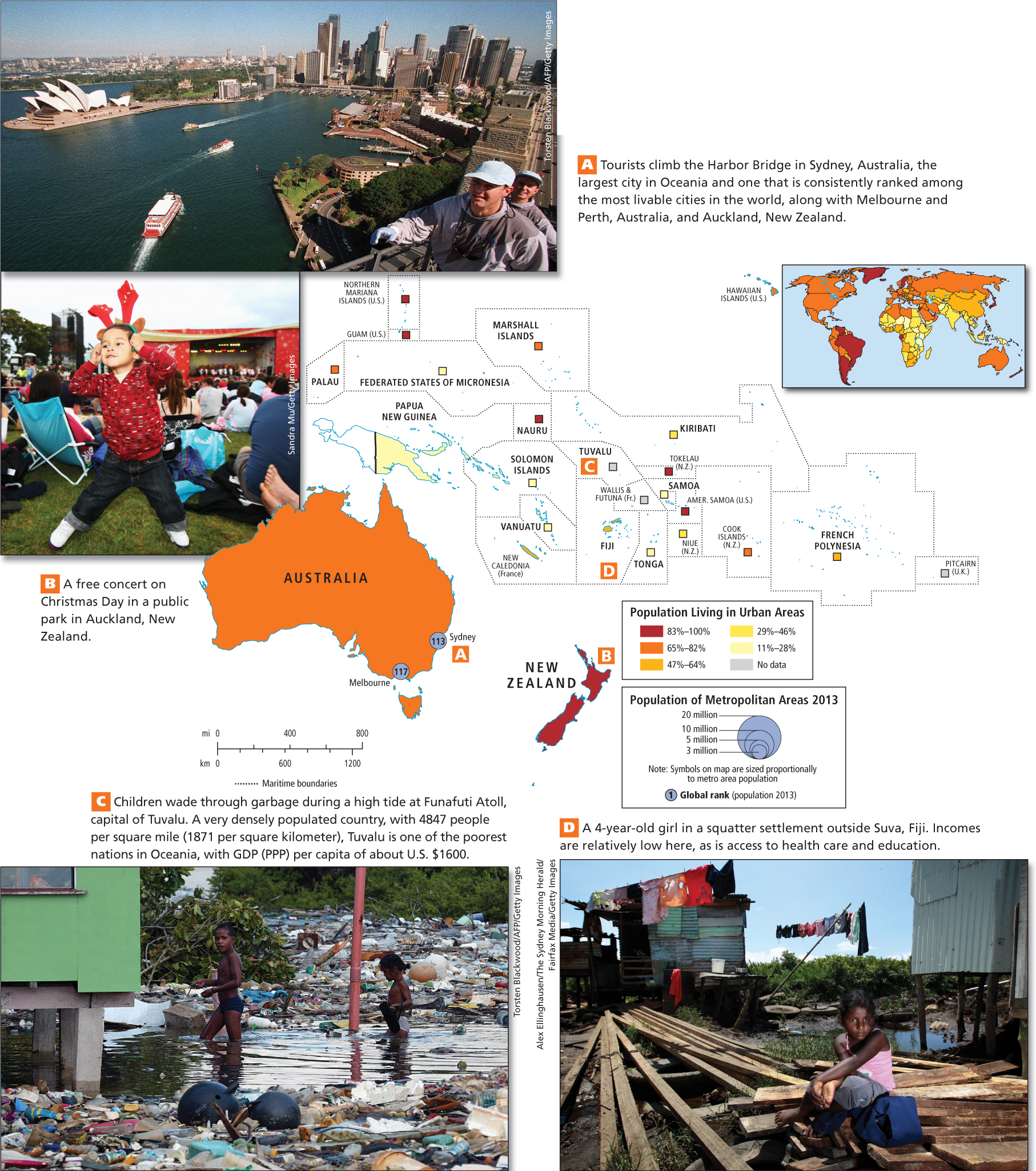11.7 URBANIZATION
GEOGRAPHIC INSIGHT 4
Urbanization: Oceania is only lightly populated but it is highly urbanized. The shift from agricultural and resource-
The global trend of migration from the countryside to cities is quite visible in Oceania, where 66 percent of the overall population lives in urban areas. Australia and New Zealand have among the highest percentages of city dwellers outside Europe. More than 82 percent of Australians live in a string of cities along the country’s relatively well-

THINKING GEOGRAPHICALLY
Use the Photo Essay above to answer these questions.
Question 11.20
A Approximately what percent of Australians live in cities?
Question 11.21
C Notice the primary features of this photo. In what environmental zone is this settlement likely located?
Throughout the Pacific, urban centers have transformed natural landscapes. In some small countries, such as Guam, Palau, and the Marshall Islands, they have become the dominant landscape. Although cities are places of opportunity, they can also be sites of cultural change, conflict, and environmental hazards (see Figure 11.18C).
Most Pacific island towns and all the capital cities are located in ecologically fragile coastal settings. Many of these waterfront towns were established during the colonial era as ports or docking facilities and were situated in places suitable for only limited numbers of people. Consequently, little land is available for development and access to housing is inadequate. Squatter settlements have been a visible feature of the region’s urban areas for decades.
Multiculturalism has been enhanced by urbanization across the region. Many urban residents are letting go of the rural ways of their childhoods, as well as their ethnic identity and cultural commitments. As time goes on, more urban people are marrying across ethnic divisions, having only one or two children, and creating new patterns of social alliances and networks. Such cultural blending results in new social tensions, which change the very nature of social life in the island Pacific. Urban unemployment and unrest are on the rise, and low rates of economic growth restrict the revenue available to governments to manage urban development.
THINGS TO REMEMBER
GEOGRAPHIC INSIGHT 4
Urbanization Oceania is only lightly populated but it is highly urbanized. The shift from agricultural and resource-
based economies toward service economies is a major reason for the urbanization of the wealthiest parts of Oceania (Australia, New Zealand, Hawaii, Guam), where 80 to 100 percent of the population lives in cities. These trends are weakest in Papua New Guinea and many smaller Pacific islands. The global trend of migration from the countryside to cities is quite visible in Oceania, where 66 percent of the overall population lives in urban areas.
Most Pacific island towns and all the capital cities are located in ecologically fragile coastal settings.
Many urban residents are letting go of the rural ways of their childhoods, as well as their ethnic identity and cultural commitments.